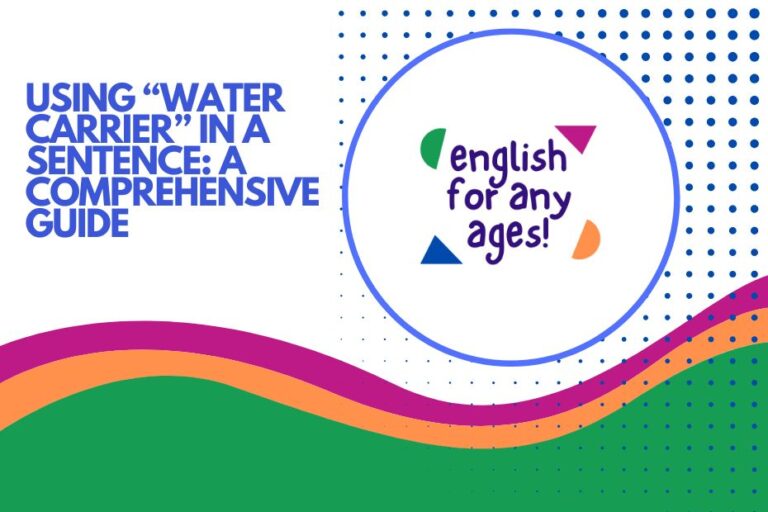Using “Health Hazard” in a Sentence: A Grammar Guide
Understanding how to use the term “health hazard” correctly is crucial for clear and effective communication, especially when discussing safety, health regulations, or potential risks. This article provides a comprehensive guide to the grammar and usage of “health hazard,” covering its definition, structural elements, various types, and practical examples.
Whether you are a student, a professional in a health-related field, or simply someone looking to improve your English skills, this guide will equip you with the knowledge and confidence to use “health hazard” accurately and appropriately in your writing and speech.
Table of Contents
- Definition of “Health Hazard”
- Structural Breakdown
- Types and Categories of Health Hazards
- Examples of “Health Hazard” in Sentences
- Usage Rules
- Common Mistakes
- Practice Exercises
- Advanced Topics
- FAQ
- Conclusion
Definition of “Health Hazard”
A health hazard is any substance, agent, or condition that can cause adverse health effects. These effects can range from minor irritations to serious illnesses, long-term diseases, or even death. The term is widely used in occupational safety, environmental science, and public health to identify and mitigate risks.
In grammatical terms, “health hazard” functions as a compound noun. It combines the noun “health” with the noun “hazard” to create a new noun that refers to a specific type of danger. The word “health” acts as an attributive noun, modifying “hazard” to specify that the danger is related to health. This noun is typically used to describe something concrete or abstract that poses a risk to a person’s well-being.
The term “health hazard” can be used in various contexts, including:
- Workplace safety: identifying potential dangers in the work environment.
- Environmental regulations: describing pollutants and contaminants that can harm human health.
- Consumer products: labeling products that may pose a risk if used improperly.
- Public health: addressing factors that contribute to disease and illness in a community.
Structural Breakdown
The structure of “health hazard” is relatively simple. It consists of two nouns combined to form a compound noun.
The first noun, “health,” acts as an adjective, modifying the second noun, “hazard.” This structure is common in English and is used to create many other compound nouns, such as “fire hazard” or “traffic hazard.”
Here’s a breakdown of the structural elements:
- Health: A noun referring to the state of being free from illness or injury. In this context, it functions as an attributive noun, describing the type of hazard.
- Hazard: A noun referring to a danger or risk.
- Health hazard: The compound noun formed by combining “health” and “hazard,” referring to something that poses a risk to one’s health.
The word order is fixed; it is always “health hazard,” not “hazard health.” This is because English generally follows a pattern of placing the modifier before the noun it modifies.
In sentences, “health hazard” can function as a subject, object, or complement. Its grammatical role depends on the specific sentence structure.
Types and Categories of Health Hazards
Health hazards can be broadly categorized into several types, depending on the nature of the risk they pose. Understanding these categories can help in identifying and addressing potential health risks more effectively.
Physical Hazards
Physical hazards are environmental factors that can cause harm without necessarily involving direct contact with a substance. Examples include:
- Noise: Excessive noise levels can lead to hearing loss.
- Radiation: Exposure to radiation can cause burns, cancer, and other health problems.
- Extreme Temperatures: Heatstroke and hypothermia are risks associated with extreme temperatures.
- Vibration: Prolonged exposure to vibration can cause musculoskeletal disorders.
Chemical Hazards
Chemical hazards involve exposure to harmful substances that can cause a variety of health problems. Examples include:
- Toxins: Substances that can cause poisoning or other harmful effects.
- Corrosives: Substances that can damage or destroy living tissue.
- Flammables: Substances that can easily catch fire.
- Irritants: Substances that can cause inflammation or irritation of the skin, eyes, or respiratory system.
Biological Hazards
Biological hazards are living organisms or their byproducts that can cause disease. Examples include:
- Bacteria: Microscopic organisms that can cause infections.
- Viruses: Infectious agents that can replicate within living cells.
- Fungi: Organisms that can cause skin infections, respiratory problems, and other health issues.
- Parasites: Organisms that live in or on another organism and cause harm.
Ergonomic Hazards
Ergonomic hazards are workplace conditions that can cause musculoskeletal disorders. Examples include:
- Repetitive Motions: Performing the same movements over and over again can lead to injuries.
- Awkward Postures: Working in uncomfortable positions can strain muscles and joints.
- Forceful Exertions: Lifting heavy objects or applying excessive force can cause injuries.
- Prolonged Sitting or Standing: Remaining in the same position for extended periods can lead to discomfort and health problems.
Examples of “Health Hazard” in Sentences
Here are several examples of how “health hazard” can be used in sentences. The examples are organized to demonstrate different grammatical roles and contexts.
“Health Hazard” as a Subject
In these examples, “health hazard” acts as the subject of the sentence, indicating what is being discussed or acted upon.
| Sentence | Context |
|---|---|
| Asbestos is a known health hazard. | Discussing the dangers of asbestos. |
| Smoking is a significant health hazard. | Highlighting the risks of smoking. |
| Lead paint in old buildings is a health hazard. | Identifying a risk in older constructions. |
| Excessive noise can be a health hazard in industrial settings. | Describing workplace dangers. |
| Air pollution is a major health hazard in urban areas. | Discussing environmental concerns. |
| Standing water can be a health hazard due to mosquito breeding. | Explaining potential risks from stagnant water. |
| Unsafe food handling practices are a severe health hazard. | Highlighting risks in food preparation. |
| Radon gas is a silent health hazard in some homes. | Identifying a hidden danger in residences. |
| Mold growth can be a health hazard, especially for those with allergies. | Describing the dangers of mold. |
| Poor ventilation is a health hazard in confined spaces. | Discussing risks in poorly ventilated areas. |
| Vaping is increasingly recognized as a health hazard. | Highlighting the risks of vaping. |
| Sedentary behavior is a growing health hazard in modern society. | Discussing the risks of inactivity. |
| Exposure to UV radiation is a health hazard. | Highlighting risks from sun exposure. |
| Lack of sleep is a significant health hazard. | Discussing the dangers of sleep deprivation. |
| Stress is a well-documented health hazard. | Highlighting the risks of chronic stress. |
| Exposure to pesticides is a health hazard for farmworkers. | Identifying risks for agricultural workers. |
| Contaminated water is a major health hazard in developing countries. | Discussing global health issues. |
| Obesity is a serious health hazard. | Highlighting the risks of obesity. |
| Unprotected sex is a health hazard due to STIs. | Discussing risks associated with sexual activity. |
| Secondhand smoke is a health hazard for nonsmokers. | Highlighting risks for those exposed to smoke. |
| Climate change is an emerging health hazard. | Discussing long-term environmental risks. |
| Excessive screen time can be a health hazard for children. | Highlighting risks associated with technology use. |
| Social isolation is increasingly recognized as a health hazard. | Discussing the risks of loneliness. |
| Food deserts are indirectly a health hazard. | Describing the impact of limited access to food. |
“Health Hazard” as an Object
In these examples, “health hazard” acts as the object of a verb or preposition, receiving the action or being affected by it.
| Sentence | Context |
|---|---|
| The company failed to address the health hazard. | Describing negligence in handling a risk. |
| They identified the mold as a serious health hazard. | Recognizing the severity of mold. |
| The government is working to eliminate this health hazard. | Describing efforts to remove a risk. |
| We must protect our children from this health hazard. | Emphasizing the need for protection. |
| The report detailed several potential health hazards. | Describing the contents of a report. |
| Ignoring the warning signs can lead to exposure to a health hazard. | Highlighting the consequences of ignoring warnings. |
| The new regulations aim to minimize health hazards in the workplace. | Describing the goal of new rules. |
| Proper ventilation can mitigate the health hazard. | Explaining a solution to reduce risk. |
| The investigation revealed a significant health hazard. | Describing the outcome of an investigation. |
| The community protested against the proposed health hazard. | Describing opposition to a potential risk. |
| The study examined the impact of the health hazard on local residents. | Describing a research focus. |
| The organization is dedicated to preventing health hazards. | Describing the goals of an organization. |
| We need to be aware of the potential health hazards around us. | Emphasizing the importance of awareness. |
| The city is committed to reducing health hazards for its residents. | Describing a city’s commitment. |
| The program provides resources to address health hazards in the community. | Describing a program’s purpose. |
| The team is working to control the health hazard. | Describing efforts to manage a risk. |
| The authorities are investigating the reported health hazard. | Describing an official investigation. |
| The campaign aims to raise awareness about the health hazard. | Describing the goals of a campaign. |
| The insurance company covers damages resulting from the health hazard. | Describing insurance coverage. |
| The solution effectively eliminated the health hazard. | Describing a successful solution. |
| The government implemented measures to prevent the spread of the health hazard. | Describing governmental actions. |
| The scientist discovered a new health hazard. | Describing a scientific discovery. |
| The community demanded action to address the health hazard. | Describing community demands. |
| The regulations require companies to report any health hazard they identify. | Describing regulatory requirements. |
“Health Hazard” as a Complement
In these examples, “health hazard” acts as a complement, providing more information about the subject of the sentence.
| Sentence | Context |
|---|---|
| The abandoned factory is a significant health hazard. | Describing the condition of an abandoned factory. |
| This chemical spill is a serious health hazard. | Describing the severity of a chemical spill. |
| The contaminated water supply is a major health hazard. | Describing the state of a water supply. |
| That old wiring is a potential health hazard. | Identifying a risk related to electrical wiring. |
| Nuclear waste is a long-term health hazard. | Discussing the persistent risks of nuclear waste. |
| The lack of sanitation is a critical health hazard. | Highlighting the dangers of poor sanitation. |
| That broken equipment is a safety and health hazard. | Identifying risks related to faulty equipment. |
| The overgrown vegetation is a fire and health hazard. | Describing the risks of overgrown vegetation. |
| The accumulation of garbage is a public health hazard. | Highlighting the dangers of garbage accumulation. |
| The damaged bridge is a structural and health hazard. | Describing the risks of a damaged bridge. |
| The improper storage of chemicals is a significant health hazard. | Highlighting the dangers of improper chemical storage. |
| The unmaintained swimming pool is a breeding ground and a health hazard. | Describing the risks of an unmaintained pool. |
| The presence of asbestos is always a health hazard. | Stating a general fact about asbestos. |
| The high levels of smog are a major health hazard in the city. | Describing the air quality in a city. |
| The abandoned mine is an environmental and health hazard. | Describing the risks of an abandoned mine. |
| The uncontrolled release of pollutants is a public health hazard. | Highlighting the dangers of pollution release. |
| The presence of lead in the soil is a serious health hazard. | Describing the risks of lead contamination. |
| The lack of access to clean water is a critical health hazard. | Highlighting the dangers of water scarcity. |
| This unregulated dumping site is a severe health hazard. | Describing the risks of an unregulated site. |
| The combination of heat and humidity is a health hazard for outdoor workers. | Highlighting the risks of extreme weather. |
| That crumbling infrastructure is a potential health hazard. | Identifying potential risks in public works. |
| The widespread use of pesticides is an environmental and health hazard. | Describing the risks of pesticide use. |
| The presence of rodents is a sign of unsanitary conditions and a health hazard. | Describing the risks of pest infestation. |
| The contaminated site remains a long-term health hazard to the community. | Describing persistent environmental risks. |
Usage Rules
When using “health hazard,” it’s important to follow certain grammatical rules to ensure clarity and accuracy.
- Singular vs. Plural: “Health hazard” is a singular noun. The plural form is “health hazards.” For example: “There are several health hazards in the workplace.”
- Articles: Use “a” or “an” before “health hazard” when referring to a single, non-specific hazard. Use “the” when referring to a specific hazard that has already been mentioned or is known to the audience. For example: “Smoking is a health hazard.” (general) vs. “The health hazard in the factory needs to be addressed.” (specific).
- Adjectives: You can use adjectives to further describe the health hazard. For example: “serious health hazard,” “potential health hazard,” “major health hazard.”
- Prepositions: “Health hazard” is often used with prepositions like “of,” “to,” “from,” and “for.” For example: “the risks of a health hazard,” “a threat to public health,” “protection from health hazards,” “measures for preventing health hazards.”
It is also important to consider the context in which you are using the term. In formal writing or technical documents, it is crucial to be precise and specific.
In informal settings, the term can be used more broadly, but clarity should still be a priority.
Common Mistakes
Several common mistakes can occur when using “health hazard.” Being aware of these errors can help you avoid them.
| Incorrect | Correct | Explanation |
|---|---|---|
| Hazard health | Health hazard | The word order is incorrect. “Health” should always come before “hazard.” |
| A health hazards | A health hazard | The singular article “a” should be used with the singular noun “health hazard.” |
| Health hazard’s | Health hazard | Using an apostrophe to indicate possession is generally incorrect unless referring to something that belongs to the health hazard itself. It’s usually better to rephrase. For example, instead of “The health hazard’s impact,” use “The impact of the health hazard.” |
| Health hazard are | Health hazards are | When referring to multiple hazards, use the plural form “health hazards” and the plural verb “are.” |
| Health hazard is everywhere | Health hazards are everywhere | If multiple instances of health hazards are implied, the plural form should be used. |
Practice Exercises
Test your understanding of “health hazard” with these practice exercises.
Exercise 1: Fill in the Blanks
Fill in the blanks with the correct form of “health hazard” (singular or plural) and the appropriate article (a, an, or the) if needed.
| Question | Answer |
|---|---|
| 1. Asbestos in old buildings is _______ serious ________. | a, health hazard |
| 2. There are several potential _______ in the workplace. | health hazards |
| 3. The government is working to eliminate _______ from the city. | the health hazard |
| 4. Smoking is widely recognized as _______ significant ________. | a, health hazard |
| 5. Lead poisoning is _______ especially for children. | a health hazard |
| 6. Standing water can create _______ due to mosquitoes. | a health hazard |
| 7. The company failed to address _______ identified during the inspection. | the health hazard |
| 8. We need to be aware of _______ in our homes. | health hazards |
| 9. The investigation revealed _______ at the construction site. | a health hazard |
| 10. Poor ventilation can be _______ in confined spaces. | a health hazard |
Exercise 2: Correct the Sentences
Identify and correct the errors in the following sentences.
| Question | Answer |
|---|---|
| 1. Hazard health is a serious concern. | Health hazard is a serious concern. |
| 2. A health hazards can be dangerous. | A health hazard can be dangerous. |
| 3. The health hazard’s impact was significant. | The impact of the health hazard was significant. |
| 4. Health hazard are present in the old building. | Health hazards are present in the old building. |
| 5. We must protect ourselves from health hazard. | We must protect ourselves from health hazards. |
| 6. A serious health hazard are asbestos. | A serious health hazard is asbestos. |
| 7. The company ignored the health hazard’s warnings. | The company ignored the health hazard warnings. |
| 8. Health hazard is everywhere in this factory. | Health hazards are everywhere in this factory. |
| 9. This chemical is a very dangerous hazard health. | This chemical is a very dangerous health hazard. |
| 10. The health hazard can cause many problem. | The health hazard can cause many problems. |
Exercise 3: Sentence Construction
Create sentences using “health hazard” in the roles specified.
| Role | Example Sentence |
|---|---|
| Subject | Air pollution is a major health hazard in many cities. |
| Object | The company must eliminate every health hazard in the workplace. |
| Complement | The abandoned factory is a significant health hazard to the surrounding community. |
| With a Preposition | The government is implementing measures for preventing health hazards. |
| With an Adjective | The broken equipment presents a potential health hazard. |
Advanced Topics
For advanced learners, understanding the nuances of “health hazard” in specific contexts and its relationship to other related terms is essential.
- Legal and Regulatory Contexts: In legal and regulatory settings, the definition of “health hazard” can be very specific and may vary depending on the jurisdiction. Understanding these legal definitions is crucial for compliance and risk management.
- Risk Assessment: The term “health hazard” is often used in the context of risk assessment, which involves identifying potential hazards, evaluating the likelihood and severity of harm, and implementing control measures.
- Related Terms: “Health hazard” is closely related to other terms such as “safety hazard,” “environmental hazard,” and “occupational hazard.” Understanding the distinctions between these terms can help you communicate more precisely.
- Public Health Policy: The identification and mitigation of health hazards are central to public health policy. Policies aimed at reducing exposure to pollutants, promoting healthy behaviors, and ensuring access to healthcare are all designed to address health hazards.
FAQ
Here are some frequently asked questions about using “health hazard.”
- What is the difference between a “health hazard” and a “safety hazard”?
A health hazard refers specifically to something that can cause illness or disease, while a safety hazard refers to something that can cause immediate physical injury. For example, a chemical spill that causes skin burns is both a health hazard and a safety hazard. A slippery floor is primarily a safety hazard.
- How do I identify a potential health hazard?
Identifying a potential health hazard involves assessing the environment and activities for any substances, agents, or conditions that could cause harm. This may involve conducting inspections, reviewing safety data sheets, and consulting with experts.
- What should I do if I encounter a health hazard?
If you encounter a health hazard, you should take steps to protect yourself and others from exposure. This may involve reporting the hazard to the appropriate authorities, using personal protective equipment, and evacuating the area if necessary. Seeking medical attention is also important if you experience any adverse health effects.
- Is “health hazard” a countable or uncountable noun?
“Health hazard” is a countable noun. You can have one health hazard, two health hazards, and so on. Therefore, it has a plural form: “health hazards.”
- Can “health hazard” be used figuratively?
While primarily used in a literal sense to describe concrete risks to health, “health hazard” can be used figuratively to describe something that poses a metaphorical threat to well-being. For example, “Toxic relationships can be a health hazard to one’s mental health.” This usage is less common and should be used with caution to avoid confusion.
- What are some examples of common health hazards in the home?
Some common health hazards in the home include mold, asbestos (in older homes), lead paint, radon gas, carbon monoxide, and household chemicals. Proper ventilation, regular cleaning, and safe storage of chemicals can help mitigate these risks.
- How do environmental regulations address health hazards?
Environmental regulations aim to protect public health by setting limits on pollutants, requiring proper disposal of hazardous waste, and mandating environmental impact assessments for new projects. These regulations are designed to minimize exposure to health hazards in the environment.
- What role does OSHA play in addressing health hazards in the workplace?
The Occupational Safety and Health Administration (OSHA) sets and enforces standards for workplace safety, including standards related to health hazards. OSHA conducts inspections, provides training, and issues citations to employers who fail to comply with safety regulations. This helps to protect workers from exposure to health hazards on the job.
Conclusion
Understanding how to use “health hazard” correctly is essential for clear and effective communication about risks to well-being. This comprehensive guide has covered the definition, structural elements, types, and usage rules of “health hazard,” along with common mistakes to avoid.
By mastering these concepts and practicing the exercises provided, you can confidently use “health hazard” in your writing and speech.
Remember to pay attention to the context in which you are using the term, and always prioritize clarity and accuracy. By doing so, you can contribute to a safer and healthier environment for yourself and others.
Continued learning and awareness are key to effectively identifying and addressing potential health hazards in various settings.






